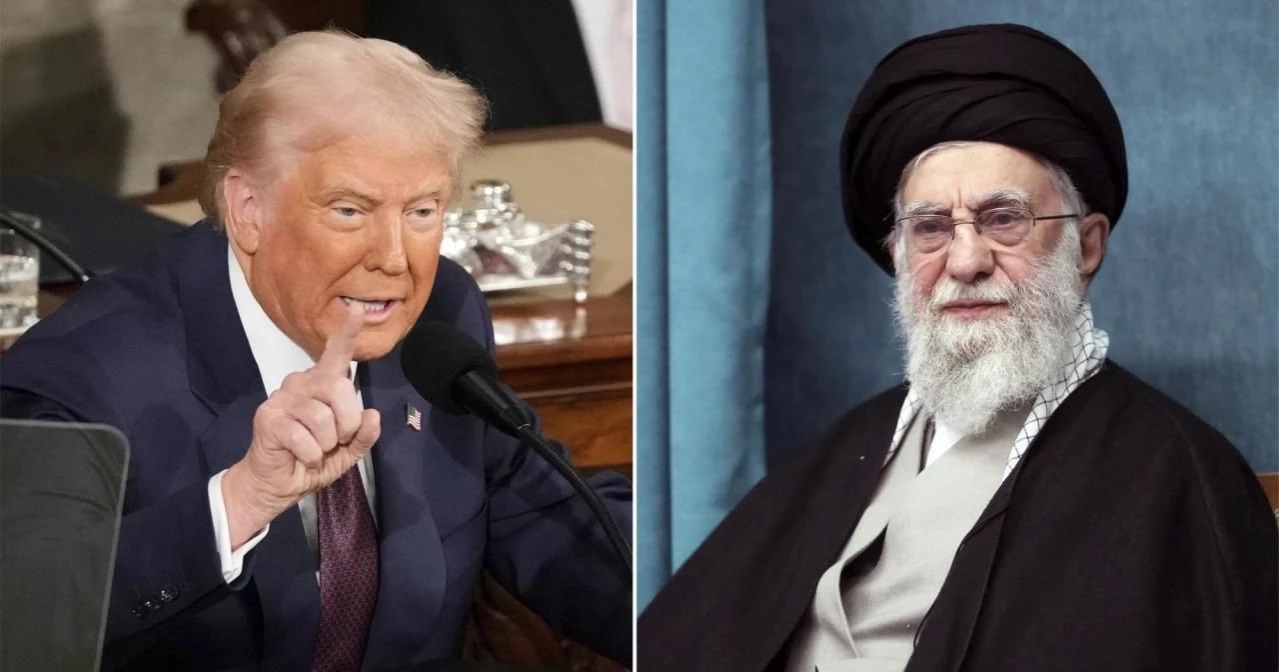Iran rejects direct talks with US amid ongoing tensions


Iran has responded to a letter sent by U.S. President Donald Trump to the country’s supreme leader in an effort to revive discussions on Tehran's rapidly progressing nuclear program, rejecting the idea of direct talks.
While Tehran has dismissed direct negotiations, it has not entirely ruled out indirect discussions with Washington. However, efforts at indirect talks have stalled ever since Trump withdrew the U.S. from the nuclear agreement with world powers in 2018 during his first term.
Trump has threatened new sanctions as part of his “maximum pressure” campaign on Iran, and reiterated that military action against Iran remains a possibility, although he continues to believe a new agreement is achievable.
Iran's 85-year-old Supreme Leader Ayatollah Ali Khamenei warned on Monday that Iran would retaliate against any attack.
Here’s an overview of the letter, Iran’s nuclear program, and the ongoing tensions between Tehran and Washington since the 1979 Islamic Revolution.
Why Did Trump Write the Letter?
Trump sent the letter to Khamenei on March 5, and the next day, in a television interview, he confirmed he had written it. He stated: “I’ve written them a letter saying, ‘I hope you’re going to negotiate because if we have to go in militarily, it’s going to be a terrible thing.’” Since returning to office, Trump has pushed for talks while simultaneously intensifying sanctions and hinting that military action, possibly by Israel or the U.S., could target Iran’s nuclear facilities.
During his first term, a previous letter from Trump elicited a strong response from Khamenei. However, Trump's letters to North Korean leader Kim Jong Un in his first term led to in-person meetings, though no agreements were made to limit North Korea's nuclear and missile programs.
How Has Iran Responded?
On Sunday, Iranian President Masoud Pezeshkian rejected direct negotiations with the U.S. over Iran’s rapidly advancing nuclear program.
“We don’t avoid talks; it’s the breach of promises that has caused issues for us so far,” Pezeshkian said during a televised Cabinet meeting. “They must prove they can build trust.”
On Monday, Khamenei responded to Trump’s renewed threats of military action, stating, “They threaten to commit acts of mischief, but we are not entirely certain that such actions will take place. We do not consider it highly likely that trouble will come from the outside. However, if it does, they will undoubtedly face a strong retaliatory strike.”
Iranian Foreign Ministry spokesperson Esmail Baghaei went further, calling Trump’s threat of bombing Iran “a shocking affront to the very essence of International Peace and Security.” He added, “Violence breeds violence, peace begets peace. The US can choose the course...; and concede to CONSEQUENCES.”
Why Does Iran’s Nuclear Program Worry the West?
Iran has long insisted its nuclear program is peaceful, but officials increasingly suggest pursuing nuclear weapons. Iran currently enriches uranium to nearly weapons-grade levels of 60%, making it the only country without a nuclear weapons program to do so.
Under the 2015 nuclear agreement, Iran was only allowed to enrich uranium to 3.67% purity and maintain a stockpile of 300 kilograms (661 pounds). The latest International Atomic Energy Agency (IAEA) report reveals Iran's stockpile is now 8,294.4 kilograms (18,286 pounds), with a fraction enriched to 60%.
U.S. intelligence agencies believe Iran has yet to begin a weapons program but has undertaken activities that could position it to develop a nuclear weapon if it chooses.
Why Are Relations So Strained Between Iran and the U.S.?
Iran was once a close ally of the U.S. under Shah Mohammad Reza Pahlavi, who purchased American military weapons and allowed CIA technicians to operate secret listening posts on the Soviet Union. The CIA had orchestrated a 1953 coup that solidified the shah’s rule.
However, in January 1979, the shah fled Iran as protests against his rule escalated. The Islamic Revolution followed, led by Grand Ayatollah Ruhollah Khomeini, establishing Iran’s theocratic government.
Later that year, university students stormed the U.S. Embassy in Tehran, demanding the extradition of the shah, leading to the 444-day hostage crisis and the severance of diplomatic relations. During the 1980s Iran-Iraq War, the U.S. backed Saddam Hussein, and the conflict's “Tanker War” saw the U.S. launch a one-day assault on Iran at sea and shoot down an Iranian commercial airliner.
Iran and the U.S. have fluctuated between hostility and limited diplomacy since then, with relations reaching a high point when Tehran signed the 2015 nuclear deal with world powers. But Trump’s withdrawal from the agreement reignited tensions in the Middle East that persist today.
